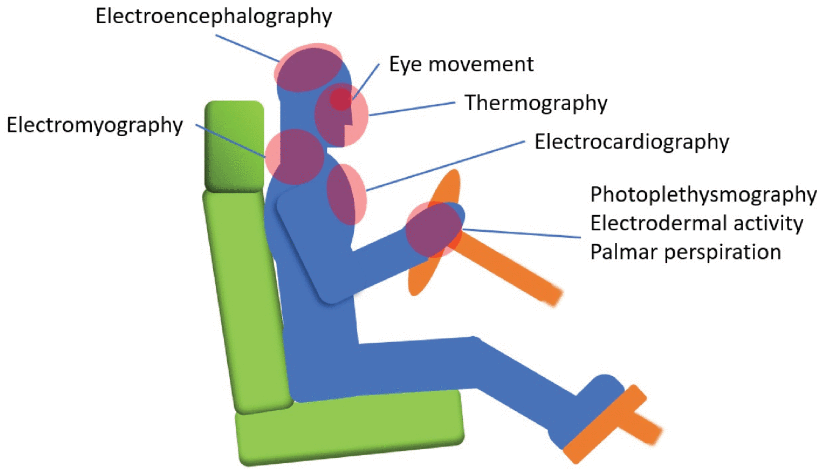Application of Physiological Sensors for Personalization in Semi-Autonomous Driving: A Review
The advancement of sensor technology and the internet of things has revolutionized the automated vehicle industry. The sector now shows significant interest in personalizing automation based on human behavior.
Behavior monitoring of the occupants with physiological sensors can be helpful in the improvement of semi-autonomous vehicles. Advanced driver assistance systems (ADAS) could be improved with personalization and innovations in sensor systems. The ADAS's personalization signifies adapting to different driving styles, including disabled persons.
The existing physiological sensors can be customized for automobile applications. Camera-based awareness detection was introduced in 2005, and recently Infrared (IR) imaging-based behavior monitoring was developed. Research is also going on to use artificial intelligence (AI) and machine learning (ML) on driving patterns of the drivers to improve the safety and skills of the drivers along with the route plan. Many companies have developed IR and camera-based sensors to monitor drivers’ facial features like drowsiness, head position, eye gaze, etc.
Different tasks of the drivers during driving, like, maintaining distance, tracking acceleration, deceleration, etc., of other vehicles on the road, lane changing, and steering control, can be personalized by tracking the drivers. The physiological sensors can monitor the different physiological states, like mental stress, eye movement, fatigue, hazard perception, steering comfort, etc.
Mental stress, fatigue, workload, etc., can be measured by monitoring the brain's electrical activity, heart rate, magnitude pulse rate, and pulse rate variability. Heart rate can be monitored by ECG (electrocardiogram) and EMG (electromyography), while EEG (electroencephalography) detects the brain's electrical activities. Other techniques like photoplethysmography (PPG), infrared spectroscopy, and image processing are also popularly used for pulse and heart rate measurement. EMG can also monitor muscle fatigue and the comfortability of the passenger. Eye movement and attention span are detected by visual scanning with a camera or thermal imaging. Multiple sensors can complement each other for the same task to avoid false alarms.
Personalizing the driving system based on behavioral activities is difficult as it varies from person to person. Driver models using physiological data with control algorithms must be developed and implemented with ADAS to make them more accurate and precise. The safety protocols set by different authorized organizations like ISO (International Organization of Standardization) must be followed strictly to increase safety.
In vehicles, most commercially available sensors rely on monitoring facial movements. So, there is an acute need for sensor development to have a holistic physiological monitoring system customized for automobiles. As the market is now more focused on sensors required for emergency applications in automobiles, there are a lot of opportunities for non-emergency sensor development for personalized driving systems. Also, most research focuses on the safety and comfort of a healthy driver in executing driving tasks. The study should also include the physically disabled and different health conditions of persons for driving and non-driving tasks in vehicles.
With the rapid development of sensors and their integration with artificial intelligence (AI) & machine learning (ML), the personalized autonomous system will be available for a safe and comfortable ride in the future.




